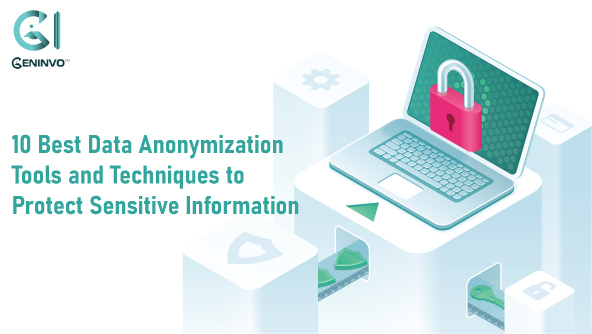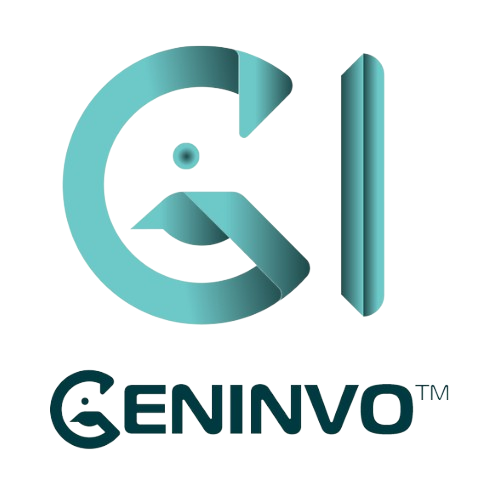Data anonymization plays a critical role in protecting privacy and complying with data protection regulations. Choosing the right data anonymization tool is essential to ensure that sensitive information remains secure while maintaining data utility. In this blog post, we present a comprehensive list of the 10 best data anonymization tools that can help you protect privacy, comply with data protection regulations, and mitigate the risk of unauthorized access or re-identification.
Additionally, we will discuss the importance and reasons to use data anonymization tools of safeguarding privacy. By understanding the strengths and weaknesses of these tools, you can make informed decisions and prioritize privacy when selecting a data anonymization solution. Let’s start with understanding the difference between Data Anonymization from Data Redaction and Data De-identification.
How is Data Anonymization Different from Data Redaction and Data De-identification?
Data anonymization, data redaction, and data de-identification are all techniques used to protect sensitive information, but they differ in their approach and level of privacy protection. Here’s an overview of how they differ:
- Data Anonymization:
Data anonymization involves modifying or transforming data in such a way that it can no longer be linked to an individual or directly identify them. Anonymized data typically goes through techniques like pseudonymization, generalization, suppression, or data masking to protect privacy. The goal is to achieve a high level of privacy while maintaining the utility of the data for analysis and research. Anonymization aims to prevent re-identification of individuals by removing or obfuscating personally identifiable information (PII). - Data Redaction:
Data redaction involves selectively removing or obscuring sensitive information from a document or dataset. It is commonly used to protect PII or confidential data when sharing or publishing documents. Redaction focuses on removing or hiding specific sensitive content, such as names, addresses, or social security numbers, while leaving the remaining data intact. The purpose of redaction is to prevent the unauthorized disclosure of sensitive information while maintaining the overall structure and context of the document. - Data De-identification:
Data de-identification is a broader term that encompasses various techniques, including anonymization and redaction. De-identification aims to remove or transform PII in a way that the data can no longer be linked to an individual. It involves the removal or alteration of specific identifiers while preserving the remaining data’s utility. De-identification techniques may include anonymization, redaction, aggregation, or other approaches to reduce the risk of re-identification.
In summary, data anonymization focuses on transforming data to prevent direct or indirect identification of individuals while maintaining data utility. Data redaction selectively removes or obscures sensitive information from documents or datasets. Data de-identification is a broader term that includes both anonymization and redaction, aiming to reduce the risk of re-identification by altering or removing PII while preserving data utility. The choice of technique depends on the specific privacy requirements, context, and regulations governing the data.
Best Data Anonymization Tools
- Shadow™:
- Key Features: Shadow™ alleviates the pain points of homegrown software utilities that often prove to be inefficient, difficult to maintain, and slow to match quickly evolving requirements. Anonymization of documents has been challenging for Life Sciences companies as they look to comply with Health Canada, France’s MR001-MR004, and EMA Policy 0070 (Phase 1 and 2). Shadow™ is a 21 CFR 11 and GDPR compliant solution to support global data sharing and de-identification requirements.
- Protegrity:
- Key Features: Protegrity offers a data protection platform that includes advanced anonymization capabilities. It supports pseudonymization, tokenization, and format-preserving encryption techniques, enabling organizations to protect sensitive data across different environments.
- Micro Focus Voltage Secure Data:
- Key Features: Micro Focus Voltage Secure Data provides a comprehensive data-centric security solution that includes powerful anonymization capabilities. It supports format-preserving encryption, tokenization, and data masking techniques, ensuring data privacy across various systems.
- ARX:
- Key Features: ARX is an open-source software library that offers a wide range of anonymization techniques. It supports generalization, suppression, and micro aggregation, allowing users to customize their anonymization process and ensure effective privacy protection.
- OpenDG:
- Key Features: Open DG is an open-source data anonymization tool that focuses on privacy-preserving data generation. It allows users to generate synthetic data while preserving statistical characteristics, enabling safe data sharing and analysis.
- Talend Data Preparation:
- Key Features: Talend Data Preparation is a data integration and preparation tool that includes data anonymization features. It provides functionalities for suppression, masking, and encryption, enabling users to ensure data privacy throughout the data lifecycle.
- IBM InfoSphere Optim:
- Key Features: IBM Infosphere Optim is a comprehensive data management solution that includes data anonymization capabilities. It supports data masking, obfuscation, and sub setting, allowing organizations to protect sensitive data during development, testing, and analytics.
- Delphix:
- Key Features: Delphix is a data virtualization platform that includes powerful data masking functionalities. It enables organizations to create virtualized, masked copies of production data, ensuring data privacy while maintaining data integrity.
- Informatica Data Privacy:
- Key Features: Informatica Data Privacy is a comprehensive data privacy management solution that includes robust data masking capabilities. It supports various masking techniques, including character masking and number masking, ensuring secure data anonymization.
- Ekobit Data Masking Suite:
- Key Features: Ekobit Data Masking Suite is a data security tool that specializes in data masking techniques. It offers a wide range of masking options, including format-preserving masking, custom rule-based masking, and dynamic data masking.
Data Anonymization techniques
- Pseudonymization:
- Explanation of pseudonymization as a technique for replacing identifying information with pseudonyms
- Discussion of its effectiveness in preserving privacy while maintaining data structure and relationships
- Highlighting tools that offer pseudonymization capabilities and their key features, such as Shadow, Privitar, Protegrity, and Micro Focus Voltage SecureData.
- Generalization:
- Introduction to generalization as a technique for reducing the granularity of data.
- Explanation of its application in preserving privacy by providing less precise values.
- Discussion of tools that facilitate generalization and their functionalities, including Shadow, ARX, OpenDG, and Privacy Analytics.
- Suppression:
- Analysis of suppression as a technique for removing specific identifiers from datasets
- Examination of its effectiveness in preventing re-identification by eliminating sensitive information
- Highlighting tools that automate the suppression process and ensure data privacy, such as Talend Data Preparation, Shadow, IBM InfoSphere Optim, and Protegrity.
- Data Masking:
- Overview of data masking techniques, including character masking and number masking
- Discussion of its benefits in preserving privacy during data sharing and testing
- Introduction to data masking tools and their features for secure data anonymization, such as Shadow, Delphix, Informatica Data Privacy, and Ekobit Data Masking Suite.
- Tokenization:
- Explanation of tokenization as a technique for replacing sensitive data with randomly generated tokens
- Analysis of its effectiveness in protecting privacy while maintaining data integrity
- Discussion of tools that offer tokenization capabilities and their integration options, including Protegrity, Vormetric Tokenization, and TokenEx.
- Differential Privacy:
- Introduction to differential privacy as a mathematical framework for privacy preservation
- Examination of its application in adding noise to datasets to protect individual privacy.
- Highlighting tools and libraries that implement differential privacy techniques, such as Microsoft’s Differential Privacy Platform, Shadow, Google’s Privacy-Safe Learning, and OpenDP.
- Data Synthesis:
- Discussion of data synthesis as a technique for generating synthetic datasets that retain statistical characteristics.
- Analysis of its benefits in preserving privacy while enabling data analysis and research
- Introduction to tools that facilitate data synthesis and their methodologies, including Synthea, Data Synthesizer, and Microsoft’s Synthetic Data Vault.
- Anonymization through Encryption:
- Overview of encryption techniques, such as homomorphic encryption and secure multi-party computation
- Explanation of their role in anonymizing data while allowing secure computations
- Discussion of tools and frameworks that enable encryption-based anonymization, such as Microsoft SEAL, Palisade, and Enigma.
- Data Masking through Obfuscation:
- Introduction to obfuscation techniques, including data shuffling and perturbation.
- Examination of their effectiveness in masking sensitive information while preserving data utility
- Highlighting tools that provide obfuscation capabilities and their functionalities, such as Shadow, ARX, OpenMondrian, and Privitar.
- Privacy-Preserving Machine Learning:
- Explanation of privacy-preserving machine learning techniques, such as federated learning and secure aggregation
- Analysis of their role in protecting data privacy during collaborative model training
- Introduction to tools and frameworks that support privacy-preserving machine learning, including PySyft, TensorFlow Privacy, and Microsoft’s OpenDP.
Importance of anonymization of data of patients from clinical studies
The anonymization of data from patients in clinical studies is of utmost importance due to the following reasons:
- Patient Privacy Protection: Anonymization ensures that the privacy and confidentiality of patients’ personal information are safeguarded. By removing or obfuscating personally identifiable information (PII) such as names, addresses, and social security numbers, the risk of re-identification and unauthorized disclosure of sensitive information is minimized.
- Ethical Considerations: Anonymization aligns with ethical principles and guidelines in research and healthcare. Respecting patient autonomy and protecting their privacy rights are fundamental ethical obligations. Anonymization enables researchers to use patient data for analysis while maintaining confidentiality and privacy.
- Regulatory Compliance: Anonymization is often required to comply with various data protection regulations, such as the General Data Protection Regulation (GDPR) in the European Union or the Health Insurance Portability and Accountability Act (HIPAA) in the United States. Failure to anonymize patient data can result in legal and regulatory consequences.
- Data Sharing and Collaboration: Anonymized data allows for safe and secure sharing of clinical study data among researchers, institutions, and stakeholders. It promotes collaboration, enables data-driven research, and facilitates comparison and replication of studies without compromising patient privacy.
- Research Integrity and Transparency: Anonymization contributes to research integrity by ensuring that data analysis and findings are based on de-identified data rather than individual patient identities. It promotes transparency and trust in the research process and allows for independent verification and peer review.
- Minimizing Bias and Discrimination: Anonymization helps mitigate biases and discrimination based on sensitive attributes such as race, ethnicity, or gender. By removing identifiers, the focus shifts to the analysis of aggregated data, reducing the risk of bias in decision-making and ensuring equitable treatment.
- Public Trust and Participation: Anonymization reassures patients and the public that their personal information will be handled with care and respect. It fosters trust in the healthcare system, encourages patient participation in clinical studies, and promotes the advancement of medical knowledge and treatment options.
Reasons why and how data anonymization should be used in clinical documents:
- Patient Confidentiality: Anonymization ensures that sensitive patient information in clinical documents, such as medical records, test results, or case reports, is protected. By removing personally identifiable information (PII) such as names, addresses, and unique identifiers, patient confidentiality is maintained.
- Compliance with Regulations: Data anonymization helps meet regulatory requirements, such as the Health Insurance Portability and Accountability Act (HIPAA) in the United States or the General Data Protection Regulation (GDPR) in the European Union. These regulations mandate the protection of personal health information and require the anonymization of patient data for research or sharing purposes.
- Research and Analysis: Anonymized clinical documents allow researchers and analysts to work with the data without compromising patient privacy. Researchers can conduct studies, perform data analysis, and derive insights while protecting patient identities and complying with ethical considerations.
- Data Sharing and Collaboration: Anonymization facilitates the secure sharing of clinical documents among researchers, healthcare providers, and other stakeholders. It enables collaboration, promotes knowledge sharing, and supports secondary use of data for research purposes.
To effectively use data anonymization in clinical documents, the following approaches can be employed:
- Redaction: Remove or obscure sensitive information in the document, such as names, addresses, or social security numbers. Redaction tools or techniques can be used to ensure that identifiable information is properly masked or removed.
- Pseudonymization: Replace identifiable information with pseudonyms or unique identifiers. This allows for data linkage and analysis without directly identifying individuals.
- Generalization: Aggregate or generalize data to a higher level of abstraction. For example, age ranges, regions, or medical condition categories can be used instead of precise values to protect patient identities.
- Data Masking: Mask sensitive information using techniques like character masking, number masking, or format-preserving encryption. This ensures that individual values are obscured while preserving the structure and context of the data.
- Consent and Authorization: Ensure proper consent and authorization procedures are followed when anonymizing clinical documents. Obtain informed consent from patients and adhere to any legal requirements or institutional policies regarding data anonymization.
- Quality Assurance: Perform thorough quality checks to verify the effectiveness of anonymization techniques and ensure that no identifiable information is inadvertently disclosed. Validation processes should be in place to confirm that the anonymized data remains useful for research and analysis purposes.
Conclusion:
Protecting sensitive information through data anonymization is crucial in today’s data-driven landscape. The 10 best data anonymization tools mentioned above, including Shadow™, Protegrity, Micro Focus Voltage SecureData, ARX, OpenDG, Talend Data Preparation, IBM InfoSphere Optim, Delphix, Informatica Data Privacy, and Ekobit Data Masking Suite, provide robust capabilities to ensure data privacy, compliance, and risk mitigation. Selecting the most suitable tool depends on your specific requirements, such as the type of data, industry regulations, and integration needs. Prioritize privacy protection and leverage these tools to anonymize data effectively while maintaining data utility and complying with data protection regulations.
By employing these techniques and best practices, data anonymization can be effectively applied to clinical documents, safeguarding patient privacy while enabling data utilization for research, analysis, and collaboration purposes.
By Ramandeep Dhami, Business Manager




